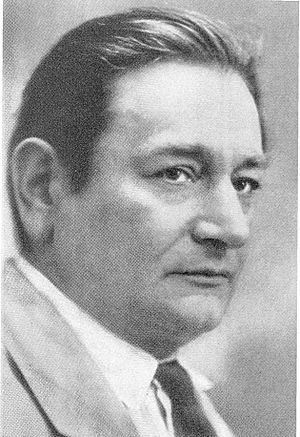Paul Bekker facts for kids
Quick facts for kids
Paul Bekker
|
|
|---|---|

Bekker c. 1925–27
|
|
| Born | 11 September 1882 |
| Died | 7 April 1937 (aged 54) |
| Occupation |
|
|
Notable credit(s)
|
|
Paul Bekker (born September 11, 1882 – died March 7, 1937) was a famous German music critic and writer. A music critic is someone who writes about music, sharing their opinions and knowledge. Bekker was known for his clear writing style and deep understanding of music. He was the main music critic for two important newspapers: the Frankfurter Zeitung in Germany and later the New Yorker Staats-Zeitung in the United States.
Contents
Paul Bekker's Early Life and Career
Paul Bekker was born in Berlin, Germany, on September 11, 1882. He was the only child of Hirsch Nachmann Michel Bekker and Olga Elsner. From a young age, he studied music. He learned to play the piano, violin, and studied music theory.
Bekker started his career playing the violin in the famous Berlin Philharmonic orchestra. After that, he worked as a conductor for a few years, from 1902 to 1905. A conductor leads an orchestra or choir. He stopped playing the violin professionally in 1906, but he still gave private lessons to students.
Becoming a Music Critic
After he stopped performing music, Bekker started writing about it. He wrote special books called monographs about composers like Oskar Fried and Jacques Offenbach. In 1911, he wrote a very successful book about the famous composer Beethoven. This book made him well-known across Germany. Because of its success, he got a job at the Frankfurter Zeitung, a major newspaper.
Bekker's Big Ideas About Music
In 1916, Paul Bekker published a book called Das deutsche Musikleben, which means "German Music Life." This book was very important for understanding how music and society are connected. It helped create a field of study called music sociology, which looks at how music affects society and how society affects music.
In this book, Bekker introduced two main ideas:
- The idea of "form" in music.
- Music as a "socially formative force," meaning music helps shape society.
Later, in 1918, he wrote another book called Die Sinfonie von Beethoven bis Mahler. In this book, he developed the idea that a symphony has a "community-building force." This means that symphonies can bring people together. This idea was very important and influenced music thinkers in other countries, like Russia.
Moving to New York
After political changes in Germany, Paul Bekker moved to Paris, France. Then, in 1934, he moved to New York in the United States. There, he became the main music critic for the New Yorker Staats-Zeitung newspaper. He continued to write about music until he passed away in New York on March 7, 1937.
Paul Bekker's Family
Paul Bekker was married three times. He had one child with his first wife, Dora Zelle. He had three more children with his second wife, Hanna Bekker vom Rath.
Paul Bekker's Collection
Today, the music library at Yale University in the United States has a special collection of Paul Bekker's belongings. This collection includes his letters, documents, photographs, and music scores. It was given to Yale by the wife of Bekker's oldest son, Konrad.

